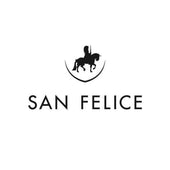
Wine classification and types: the complete guide for wine lovers
The world of wine is vast and fascinating, with a variety of types and classifications that can be confusing to those who are approaching this beverage for the first time. Whether you are an enthusiast, a sommelier or simply a curious person, understand the different classifications of wines is essential to fully appreciate their unique characteristics. In this article we will explore in detail the classification of wines and the main types that exist.
Classification of wines
The classification of wines varies depending on several factors, such as sugar content, production method, origin and color. Let's look at the main ways of classification together.
1. Classification by color
One of the first characteristics that differentiates wines is the color. Wines can be divided into three main categories:- Red wines: obtained from the fermentation of red grapes, with the skin giving the characteristic color. Popular examples include the Chianti, the Barolo and the Cabernet Sauvignon:
- white wines: made from white grapes or, in some cases, from red grapes but vinified without the skin. The Pinot Grigio and the Chardonnay are among the best-known whites;
- rosé wines: they rank among the Red wines and whites, made by brief maceration of the skins of red grapes. Well-known examples are Cerasuolo d'Abruzzo and the Rosè of Apulia.
2. Classification according to sugar content
The residual sugar content differentiates the dry, semi-dry and sweet wines:- dry wine: has a sugar content of less than 4 g/l, characterized by a dry feeling on the palate. Wines as the Sauvignon Blanc and Sangiovese fall into this category;
- abboccato wine: has a medium sugar content (between 4 and 12 g/l), offering a slight sweetness. An example is the Prosecco extra dry;
- sweet wine: with a high sugar content, above 45 g/l. Passito wines, such as the Moscato d'Asti or Vin Santo, fall under sweet wines.
3. Classification according to the method of production
Wines can also be classified according to their production process:- still wines: are the classic wines, without effervescence, like most reds and whites.
- sparkling wines: have a slight effervescence, due to partial fermentation or addition of carbon dioxide. A common example is Lambrusco;
- sparkling wines: effervescent wines produced by the classic or Charmat method, such as the Champagne and the Prosecco.
- raisin wines: obtained by drying grapes, which concentrate sugars and aromas, such as the Passito of Pantelleria.

The Main Types of Wine
After exploring the general classifications, let's go into detail about the main types of wine on the market.
Wines Freezes
Still wines are the most common and are free of Sparkling wine. They can be further subdivided into:
- reds: with tannins and complex structure, suitable for pairing with meats and rich dishes.
- whites: usually fresher and lighter, ideal with fish and delicate cheeses.
- rosés: perfect for aperitifs or pairings with light summer dishes
Wines Sparkling wines and sparkling
- Champagne: world-renowned French sparkling wine made by the classic method.
- Prosecco: Italian sparkling wine produced by the Charmat method, known for its freshness and lightness.
- Franciacorta: Another fine Italian sparkling wine, produced by the classic method, similar to the Champagne.
Wines Sweets and Passiti
Sweet wines are distinguished by their richness and smoothness, ideal with desserts or alone as a meditation wine:
- Moscato: Aromatic, light and fruity sweet wine, often sparkling.
- Passito: sweet wine obtained by drying grapes, such as the famous Vin Santo Tuscan.

Conclusions
Get to know the classification and types of wine is not only useful for choosing the perfect bottle, but also to better understand the flavors and characteristics that each wine can offer. From Red wines full-bodied to sweet dessert wines, the wine scene is rich and varied, catering to the tastes of every wine lover.
To better orient yourself in the world of wine, we recommend experimenting, pairing different wines with your favorite dishes and thus discovering new taste sensations.
Did you find this wine guide interesting? Share it on your socials and stay updated with our articles dedicated to the world of oenology!





























